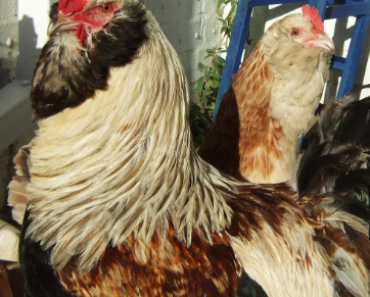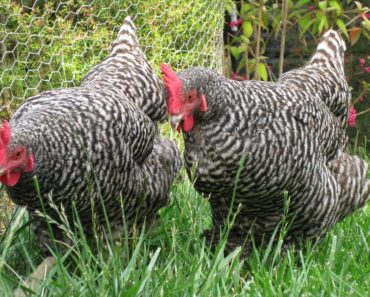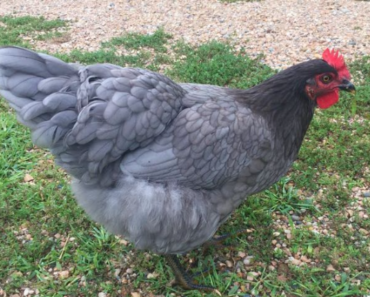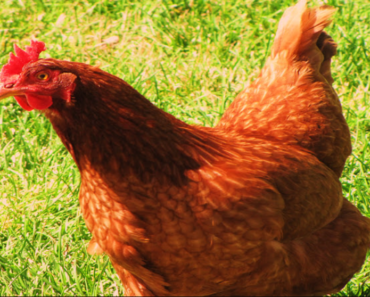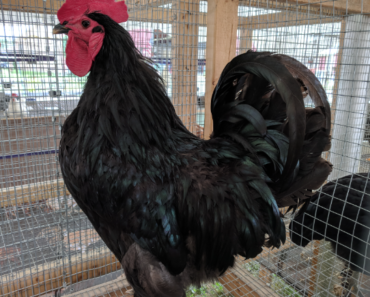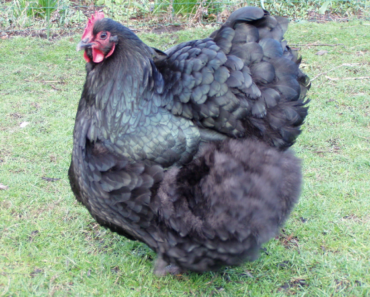Contents
- 1 The Fascinating Silkie Chicken: A Unique Breed in the World of Poultry
- 2 The History of Silkie Chicken
- 3 Characteristics of Silkie Chicken
- 4 Silkie Chicken Care and Health
- 5 FAQ
- 5.1 What are the unique characteristics of Silkie chickens that set them apart from other chicken breeds?
- 5.2 How do Silkie chickens adapt to different climates and environments?
- 5.3 What are the nutritional requirements for Silkie chickens to ensure their optimal health and development?
- 5.4 Related Posts

A unique breed renowned for its fluffy plumage and gentle temperament. This coveted breed has captivated chicken enthusiasts worldwide with its striking appearance and endearing personality. Join us as we delve into the fascinating world of Silkie chickens, uncovering their origins, distinctive traits, and how to care for these lovable feathered friends.
The Fascinating Silkie Chicken: A Unique Breed in the World of Poultry
Silkie chickens are one of the most unique and intriguing breeds in the world of poultry. Known for their distinctive appearance and unequaled charm, Silkies have gained popularity among backyard chicken enthusiasts.
What sets Silkies apart from other chicken breeds is their soft and fluffy feathers, which lack the pointy barbs found in regular chicken feathers. As a result, they have a silky and smooth texture that makes them incredibly pleasing to touch.
Silkies come in a variety of colors including white, black, blue, buff, and splash. Their feathers also extend down their legs and feet, giving them a distinguishable appearance that is often described as looking like they are wearing fuzzy boots.
Another interesting characteristic of Silkies is their blue-black skin and dark-colored flesh. This unusual trait is caused by a genetic condition called dermatosis, which results in an excess production of melanin. Despite their dark appearance, their meat is considered a delicacy in some Asian cuisines.
In addition to their distinctive physical traits, Silkies also have a calm and docile temperament, making them ideal pets for families, especially those with children. They are known to be friendly and social, often seeking human companionship and eagerly accepting treats from their owners.
While Silkies are not known for their egg-laying capabilities, they do produce a reasonable number of small, cream-colored eggs. They are also known to go broody easily, making them excellent mother hens for hatching fertilized eggs or raising chicks.
Overall, the Silkie chicken is truly a breed like no other in the world of poultry. Their unique appearance, gentle nature, and interesting genetic traits make them a fascinating addition to any flock. Whether you’re a poultry enthusiast or simply appreciate the beauty of these remarkable birds, Silkies are sure to captivate your heart.
The History of Silkie Chicken
Silkie chicken has a fascinating history that dates back centuries. The exact origins of this breed are unclear, but it is believed to have originated in China or Southeast Asia. This breed is famous for its unique appearance, with its black skin and bones, fluffy plumage, and striking blue-black or white feathers.
According to folklore, Silkies were brought to Europe during the time of Marco Polo. These chickens quickly gained popularity for their unusual appearance and friendly demeanor. They were prized as ornamental birds and often kept in royal gardens.
Silkie chickens were recognized by the American Poultry Association in 1874 and have since become a beloved breed among chicken enthusiasts worldwide. Today, they are not only raised for their beauty but also for their delicious meat and ability to hatch and raise chicks.
Characteristics of Silkie Chicken
Silkie chickens have distinct characteristics that set them apart from other breeds. Their most notable feature is their soft, fluffy plumage, which feels like silk or fur. This unique trait is due to a genetic mutation called “fibromelanosis,” which gives them their black skin, bones, and feathers.
In addition to their distinctive appearance, Silkies are known for their gentle and docile nature. They are friendly and easily approachable, making them a popular choice as pets or backyard chickens. They are also highly broody, meaning they have a strong instinct to sit on eggs and care for their young.
Silkie chickens come in various colors such as black, white, blue, buff, and splash. They have small, round bodies, feathered crests, and turquoise-blue earlobes. Despite their fluffy appearance, Silkie feathers lack barbicels, the tiny hooks that hold most feathers together, giving them a more relaxed and disheveled look.
Silkie Chicken Care and Health
Taking care of Silkie chickens requires some special considerations due to their unique characteristics. Here are some tips for keeping them happy and healthy:
Housing: Provide a secure and predator-proof coop with adequate ventilation. Silkies are relatively small chickens, so make sure the coop is not too large or drafty, as they are more susceptible to cold temperatures.
Feeding: Silkies have specific dietary needs and enjoy a mix of grains, vegetables, fruits, and high-protein feeds. They also require access to fresh water at all times.
Protection: Due to their limited vision caused by their fluffy crests, Silkies are more vulnerable to attacks from predators. Keep them in a safe enclosed area or supervise them when they are free-ranging.
Healthcare: Regularly check for any signs of illness, such as lethargy, loss of appetite, or abnormal feather growth. Silkies may require extra attention to their feet and leg feathering, as their excessive fluff can lead to matted feathers and foot problems.
By providing proper care and attention, Silkie chickens can live long and happy lives, delighting their owners with their unique appearance and gentle personalities.
FAQ
What are the unique characteristics of Silkie chickens that set them apart from other chicken breeds?
The Silkie chicken breed is known for its unique characteristics that set it apart from other chicken breeds. Here are some key features:
1. Feathers: Silkie chickens have a distinctive appearance due to their fluffy feathers, which feel like silk or fur. The feathers lack barbs, so they don’t stick together like traditional chicken feathers, giving them a soft and fluffy appearance.
2. Color Variations: Silkie chickens come in a variety of colors, including black, white, blue, gray, buff, and partridge. They can also have multiple feather colors, with combinations like black and white or buff and gray.
3. Skin and Bones: Silkie chickens have unique characteristics beyond their feathers. One of these is their skin, which is dark bluish-gray or blackish. This extends to their bones as well, which are black instead of the usual white.
4. Crested Head: Silkie chickens have a crest on their head, which consists of an abundance of soft feathers that cover their skull, often resembling a pom-pom. The crest can sometimes partially obstruct their vision.
5. Beard and Muffs: Another distinct feature of Silkie chickens is the presence of a beard and muffs. These are tufts of feathers that grow underneath the beak, covering the sides of the face, giving them a fluffy appearance.
6. Docile Temperament: Silkie chickens are known for their friendly and calm disposition. They are often considered one of the most docile chicken breeds, making them popular choices for backyard flocks and as pets.
7. Broodiness: Silkie hens are renowned for their broody nature. They tend to go broody frequently and make excellent mothers, often willing to adopt and care for chicks from other breeds.
These unique characteristics make Silkie chickens stand out among other chicken breeds and contribute to their popularity among chicken enthusiasts and hobbyists.
How do Silkie chickens adapt to different climates and environments?
Silkie chickens are known for their adaptability to different climates and environments. They originated in Asia and have been bred to withstand a wide range of temperatures.
In cold climates, Silkie chickens have feathers that are more dense and fluffy than other breeds, helping to insulate them and keep them warm. Their feathers also have a unique texture that repels water, which helps to prevent them from getting wet and cold.
In hot climates, Silkie chickens have a unique black skin that helps them to radiate heat more efficiently. This adaptation allows them to stay cool even in high temperatures. They also have a smaller body size compared to other breeds, which helps them to regulate their body temperature more effectively.
Silkie chickens are generally resilient and can adapt well to various environments. However, it is important to provide them with proper shelter and care to ensure their well-being in extreme climates. Providing shade, ventilation, and access to fresh water is crucial in hot environments, while insulated coops and protection from drafts are important in cold climates.
Overall, Silkie chickens have developed unique characteristics that enable them to thrive in different climates and environments, making them a popular choice among chicken keepers worldwide.
What are the nutritional requirements for Silkie chickens to ensure their optimal health and development?
Silkie chickens have some unique nutritional requirements compared to other chicken breeds. Here are some key factors to consider in order to ensure their optimal health and development:
1. Protein: Silkie chickens require a higher level of protein in their diet compared to other breeds. Their diet should consist of around 18-20% protein. This can be achieved by providing them with a balanced feed that includes high-quality sources of protein such as soybean meal or fish meal.
2. Calcium: Silkie chickens have a higher calcium requirement due to their unique feather structure. It is important to provide them with a calcium-rich diet to maintain healthy feathers. This can be accomplished by offering them crushed oyster shells or providing a layer feed specifically formulated for egg-laying breeds.
3. Vitamins and Minerals: Silkie chickens, like all chickens, require a well-rounded diet that includes a variety of vitamins and minerals. This can be achieved by offering them a mix of commercial poultry feed, fresh fruits and vegetables, and occasional treats like mealworms.
4. Water: Access to clean and fresh water is crucial for Silkie chickens. Their water should be changed daily to maintain hygiene and prevent dehydration.
5. Grit: Silkie chickens need access to grit, such as small stones or commercially available poultry grit, to aid in digestion. Grit helps break down food in their gizzard, allowing them to properly absorb nutrients.
6. Foraging: Silkie chickens are excellent foragers and enjoy exploring the outdoors. Allowing them to free-range or providing them with ample space to scratch and search for insects and plants can contribute to their overall health and well-being.
Remember to monitor your Silkie chickens’ weight and condition regularly to adjust their feed intake accordingly. Consulting with a poultry nutrition expert or veterinarian can also help tailor a diet specific to your Silkie’s needs.
The Silkie chicken is truly a fascinating breed that has captivated poultry enthusiasts around the world. With its unique appearance, silky plumage, and friendly temperament, it has become a beloved addition to many backyard flocks. Whether you’re looking for a unique show bird or a pet with an abundance of charm, the Silkie chicken is sure to delight. So, why not consider adding this extraordinary breed to your flock? Your chickens (and your neighbors) will surely be enamored by their beautiful presence.

